In this review, we’ll look at the new Fujifilm GFX100 II, the second edition of Fujifilm’s game-changing GFX100 professional medium format camera launched in June 2019.

I had no intention of acquiring the GFX100 II because I’m fully satisfied with the GFX100S. However, when the initial reviews started appearing, I couldn’t resist placing an order for launch day delivery. I also ordered the long-awaited Fujinon GF55 F1.7 at the same time.
The key selling point for me of the GFX100 II was the improved autofocus (AF) capabilities, which appeared to utilize the AI assisted AF system from the X-T5/XH-2 and X-H2S cameras. Some hesitation for pulling the trigger included the increased size and weight, and the additional complexity and size of the removable EVF.

In the title of this review, I used the phrase “All About Perspective” because I think this is an important point. Whether you find this camera compelling or not will depend greatly on your perspective and expectations derived from your current camera system.
I’m coming at this review from the perspective of a GFX100S user and someone that can fall back on a Sony A7R5 when I need the world’s best AF and/or when I need a smaller camera. I’m also coming at this review as a diehard Fujifilm fan who has been on the GFX journey since 2016 when I acquired a GFX50R.
Disclaimer: As with all of my reviews, the GFX100 II and all lenses used in the review were purchased at the prevailing market price from an Authorized Fujifilm Retailer. In this instance, it was from JD.com in Mainland China from the Fujifilm JD Flagship Store. Fujifilm and JD.com were not involved with this review.

Autofocus
Fujifilm made it clear that the major selling point of the GFX100 II was the new AI assisted AF system, leveraged from the smaller Fujifilm APSC cameras. While it was a latecomer in the APSC world, this system brings something completely new and unique to the Medium Format category: Subject Detection AF.
“There’s no other Medium Format camera that comes even close to what the GFX100 II promises to do.”
There’s no other Medium Format camera that comes even close to what the GFX100 II promises to do. Fujifilm noted the sensor can convey information nearly two times faster than the one in the GFX100S, and when partnered with the latest X-Processor 5, The GFX100 II now has modern subject detection and tracking capability.
This enables the GFX100 II to be the first and only Medium Format camera to have subject detection that can identify human eyes, animals, birds, trains, planes, automobiles and motorcycles. Fujifilm also promised greatly improved subject tracking once the subject is identified.

So how does it perform in reality? Your impression will greatly depend on your perspective. If you’re coming from a modern Full Frame or APSC camera, you’ll be somewhat disappointed with the GFX100 II’s subject detection capability and greatly disappointed with its subject tracking capability.
“If you’re coming from a Medium Format camera, or an older generation camera from the other formats, the GFX100 II will feel like a revolution.”
However, if you’re coming from a Medium Format camera, or an older generation camera from the other formats, the GFX100 II will feel like a revolution. This difference in perspective is why I believe there have been such polarizing opinions of this camera’s AF capabilities. Some said it’s magic, while others have been disappointed.

Subject Detection AF
Fujifilm has made huge strides with their AI assisted AF system. In most cases, the AF system can lock onto the intended target, especially in AF-S mode where the subject is static. There are large variances of opinions on Fujifilm’s AF systems, so I spent a lot of time trying to understand why.
After extensive testing, I’ve concluded the variance can be traced to the sub-algorithms within the system. For example, I’ve found the system to be exceptionally good at identifying a human eye or face. Even in very dark situations or when the human is at a far distance, the Fujifilm system can find the eye, and failing that, the face. It doesn’t always get the retina perfectly focused, but it’s miles better than the GFX100S.




I’ve also found the system incredibly good at finding the eye of birds, fronts of trains, bicycles, motorcycles, automobiles and planes. It seems the AI training models have had a great variety of images to learn from in those categories.
“Where the subject detection becomes unreliable however is with animals. The system on the GFX100 II, just like the one on my X-T5, generates far too many false positives with the dogs I tested it on.”
Where the subject detection becomes unreliable however is with animals. The system on the GFX100 II, just like the one on my X-T5, generates far too many false positives with the dogs I tested it on. In back to back sequences of shots, one set can be perfectly in focus, while the very next set will be just slightly out of focus.

The box will confidently show green on the eyes of my dogs, but when viewing the images later, the camera’s focus was in the vicinity, but nowhere near perfect. This is especially apparent with white fur animals like Oliver.
This variability is frustrating because the animal subject detection shows great promise. In a very dimly lit house, I casually brought the GFX100 II down to a puppy’s eye level and fired off a few shots. Given Tutu’s eyes are barely discernable to my human eye, I didn’t expect the camera to do any better. I was very surprised to see the green box on his eye and the image to be perfectly in focus.

Subject Tracking AF
While subject detection on Fujifilm’s AI assisted AF systems has been consistently excellent (except for animals), the ability to track the subject as it moves has been rather dismal. This is due to two factors. The first being lens construction as Fujinon likes to use slow DC motors rather than faster linear magnetic motors on their brightest primes, and the second being the AF system itself.

Sadly, the GFX100 II carries the same characteristic over from its smaller format siblings. Depending on the lens and subject, the system struggles to track the subject. This is especially apparent when tracking an animal as the system struggles both on locking onto the eye and then trying to keep it in focus.
There’s some good news however. Just like with its smaller format siblings, the system is rather good at tracking human eyes, birds, planes and cars. When using the faster focusing Linear Motor (LM) lenses, I experienced an 80% keeper rate with humans and birds, and 90% with cars and planes.
“Sadly, the GFX100 II carries the same characteristic over from its smaller format siblings. Depending on the lens and subject, the system struggles to track the subject.”
Dogs unfortunately produced a 50% keeper rate even though the camera would show a false positive green box for 100% of the shots. When using the slower focusing lenses (GF80 especially), the keeper rate dropped dramatically for all types of subjects; sometimes, the green box would appear for 100% of the shots, but in actuality, 0% were properly in focus. It’s definitely something Fujifilm needs to work on.
The most amazing sensor and lenses in the world won’t mean much if the subject is out of focus. Users have been willing to accept workarounds in Medium Format, but with so much hype around the new AF system, Fujifilm really needs to find a way to deliver on that promise. When the box is green, the subject should be in focus.

AF Summary
Whether you find the system amazing, adequate or frustrating will depend largely on your previous system, and therefore, your expectations. In the table below, I’ve provided my experience of using the different cameras to track various subjects. The percentage is how many tack-sharp images the cameras were able to produce over a variety of subjects.
The numbers should be taken with some caution as it’s extremely difficult to replicate the test scenarios. For additional context, the only settings changed were to set AF-C to Focus Priority and to use high minimum shutter speeds to ensure no motion blur. No other autofocus settings were changed from their defaults. Linear Motor (LM) lenses were used for the Fujifilm cameras. G-Master lenses were used for the Sony.
| Subject Detection/Tracking | Fujifilm X-T5 | Fujifilm GFX100S | Fujifilm GFX100 II | Sony A7R5 |
|---|---|---|---|---|
| Human Eye | 80% | 60% | 80% | 99% |
| Animals | 60% | N/A | 50% | 95% |
| Birds | 90% | N/A | 80% | 99% |
| Planes | 90% | N/A | 90% | Not tested |
| Cars | 90% | N/A | 90% | Not tested |
| Bicycles/Motorcycles | 90% | N/A | 80% | Not tested |
If you’re coming from a modern Sony camera, the GFX100 II AF will be frustrating and painful to use. If you’re coming from another GFX or Medium Format camera, the GFX100 II’s AF system will be impressive. If you’re coming from a modern Fujifilm APSC camera, the GFX100 II’s AF system will feel very familiar.
“The fact that Fujifilm have managed to put the same AF system from their APSC cameras into a sensor that’s four times the size is rather remarkable.”
The fact that Fujifilm have managed to put the same AF system from their APSC cameras into a sensor that’s four times the size is rather remarkable. I’m impressed overall, however when comparing to the A7R5, there’s still a lot of room for improvement in Fujifilm’s system.
It was only a few years ago that Fujifilm was lagging behind in video performance, and now look at what their engineers have achieved by bringing industry-leading video to this large sensor. I can only hope that their engineers are now focused on improving the AF system, by feeding the AI more examples, in preparation for a future firmware update.
Subject Detection & Tracking Examples
Human Eye-AF


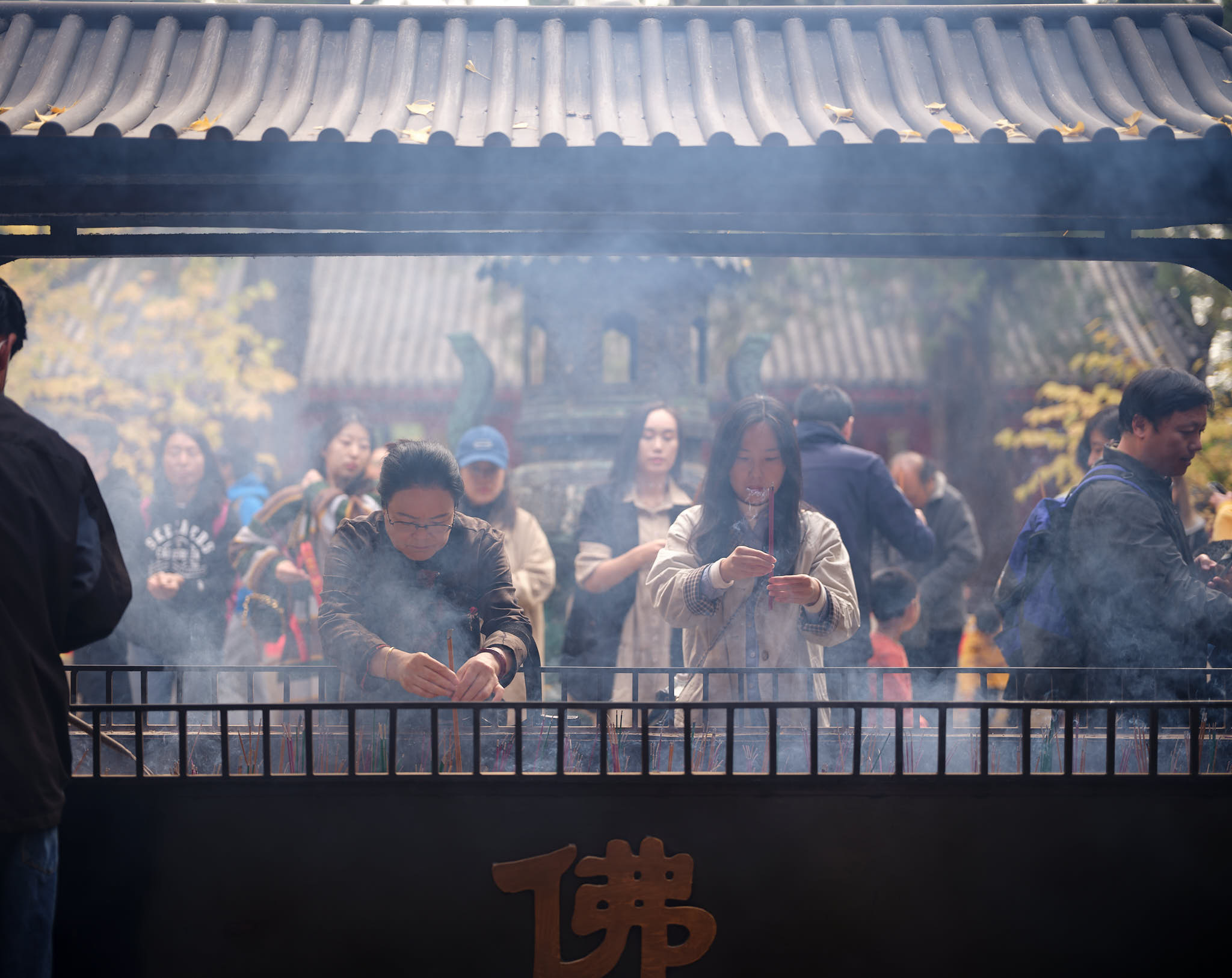
Animal Eye-AF






Bird Eye-AF
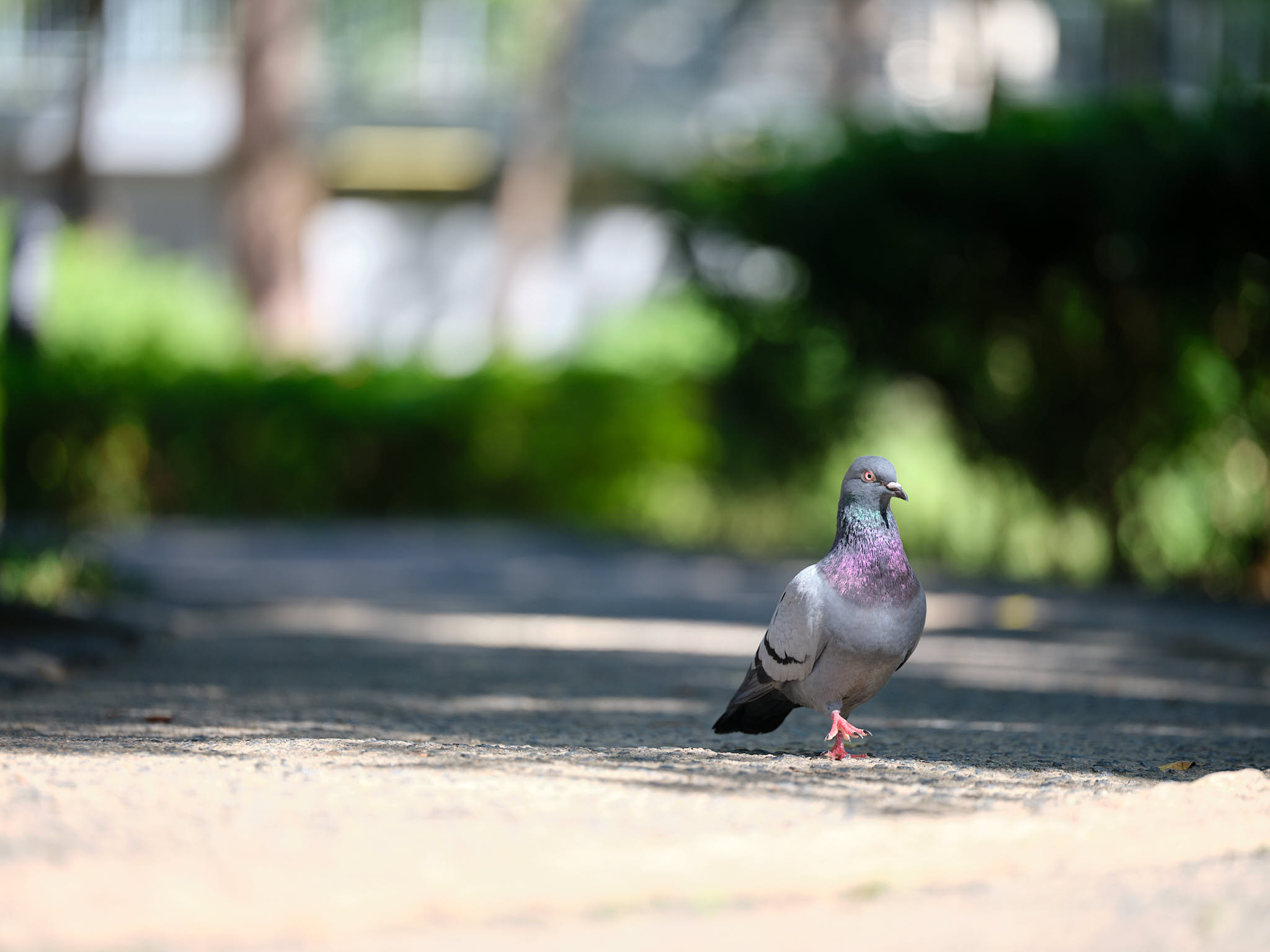


Plane AF

Car AF

Size & Weight
The whole topic of perspective is going to come up again here. There’s no getting around the fact that the GFX100 II is a chunky camera, however if you’re coming from an original GFX100, this camera will seem like a marvel of miniaturization!
Compared to my GFX100S, the GFX100 II is about 1cm taller and about 0.5cm thicker. The thickness doesn’t make any difference since there’s always a lens attached to the camera when transporting it. However, the additional 1cm in height is noticeable and makes this camera a tight squeeze where the GFX100S would just slide in.
The new camera is also heavier than the GFX100S by about 100g. It’s noticeable, but not a huge change. The weight balance is improved such that larger lenses such as the GF110 are easier to manage on this body. What’s more noticeable is the larger size; the camera feels chunky when holding it, when seated on a table and when using it.

I’d much rather Fujifilm had used the GFX100S body, but then I’m not a professional photographer who I am certain appreciates the professional connectivity they’ve squeezed into the GFX100 II. The GFX100S looks so right and sleek when placed next to the chunky GFX100 II.
I’d imagine that a GFX100S II is currently in the works at a lower price point, likely with a lower resolution and fixed EVF, less connectivity options and perhaps normal SD cards. That will be an incredible camera if it comes to life at US$5,999.
“From a pure engineering perspective, it’s amazing what Fujiflm have done with the GFX100 II.”
From a pure engineering perspective, it’s amazing what Fujiflm have done with the GFX100 II. The range of connectivity options (Ethernet, full size HDMI, 3.5mm headphone and USBC) is excellent and perfect for the professional user. That they’ve managed to pack all of that in, along with a 44mm x 33mm sensor and up to 8 stops of In-Body Image Stabilization (IBIS) is amazing.
Back to perspective, if you’re coming from smaller Full Frame cameras or Fujifilm’s APSC offerings, the GFX100 II is going to feel enormous. If you’re coming from a GFX100S, it will feel like a slight regression; if you’re coming from the GFX100, this camera will feel like a time-warp into the future.

Build Quality
In the launch marketing for the GFX100 II, there was an emphasis on the improved build quality. Many reviewers remarked on how the camera felt very sturdy with greatly improved controls and interfaces.
I’m not seeing any tangible improvement in build quality compared to my GFX100S. In fact, I’m disappointed that Fujifilm continues to use cheap rubber hinges on the GFX100 II’s most used doors (ports on left side). I was ok with this in my GFX100S review because that camera was built to a price point. The flagship GFX100 II should have door hinges that at least match the much cheaper X-T5.
“I’m not seeing any tangible improvement in build quality compared to my GFX100S. In fact, I’m disappointed that Fujifilm continues to use cheap rubber hinges on the GFX100 II’s most used doors.”
The buttons continue to be barely acceptable for a professional camera. How anybody can talk about excellent build quality while pressing the two buttons to the right of the LCD screen is beyond me. They’re mushy, with no tactile feel, and a clear step backwards.
This is not to say the build quality is bad. Far from it as the camera, like all modern Fujifilm cameras, has that feel of being built from a solid block of magnesium (they literally are). It’s just the things that Fujifilm attaches to the body that somewhat let it down.

One nice touch is the new leather material Fujifilm has used for the touchpoints around the camera. The BISHAMON-TEX leather with the Japanese inspired imprint looks and feels like something Leica would use. I only wish that the whole camera was black so that it would have that Leica SL2 sleekness, but alas, Fujifilm uses dark grey for its professional cameras.
Image Quality
There’s been a lot of hype about 16-bit images and improved dynamic range from the lowering of the base ISO to 80. The reality is that you’d have to be at a very extreme edge case to notice any difference. Even that, the difference would only be visible when magnified 200-400%.
I’ve seen several people post on the GFX forums on facebook and how the new sensor has better colours, dynamic range and astonishing 16-bit RAW files, but again, I’m not seeing any tangible difference in any normal images I’ve taken thus far. I consider this a marketing gimmick.
I think this is a bit like hi-fi companies that convince us that a better cable will make our system sound better. Sure, a 2awg speaker cable will have less resistance, but as long as the cable length is reasonable, even a 14awg speaker cable is more than adequate.

Same with the GFX100 II sensor; sure, the extra 2 bits provides some marginal benefit if you’re pushing shadows more than five stops, but the extra disk space and speed penalty are rarely worth the tradeoff. Furthermore, Jim Kasson’s testing has shown the camera to slip into 12-bit and 14-bit mode in certain drive and shutter modes.
Putting all that aside, the image quality on the GFX100 II continues the extraordinary performance of its 102MP predecessors. Regardless of what camera system you come from (exception being the Hasselblad X2D), you’ll fall deeply in love with what you see in your images. I always enjoy seeing a person’s reaction when I reveal a 100% crop of an image taken with the GFX100S/II series.

Video Quality
I’m not much of a video person so I’ll defer to experts like Gordon Liang or Gerald Undone.
I will note however that Fujifilm has spent a lot of time and energy on delivering professional grade video for the GFX100 II, with the addition of a long list of capabilities:
- 4k 60p using the full-width of the sensor
- 8k 30p with a significant crop of the sensor
- 4:2:2 10-bit in-camera recording
- Several mount options with built-in scaling (GF, Premista, 35MM, Anamorphic 35MM)
- Vectorscope
- Waveform
- Anamorphic de-squeezing in-camera
- F-Log2 to increase dynamic range to 14+ stops (according to Fujifilm)
- Frame-io Camera to Cloud integration
- MF assist MAP
- Apple ProRes RAW and Blackmagic RAW codec support
- Fujifilm Cooling Fan option
- Recording to external SSD via USB
- ATOMOS AirGlu BT Wireless Timecoding capability
- Recording Frame Indicator
These are significant improvements in the camera’s video capabilities and will open up a world of opportunity for smaller scale moviemakers to utilize a vast number of lenses to turn their vision into reality. The improvements are so significant that it’s tempting me to dip my toes deeper into video just to utilize what Fujifilm have built.


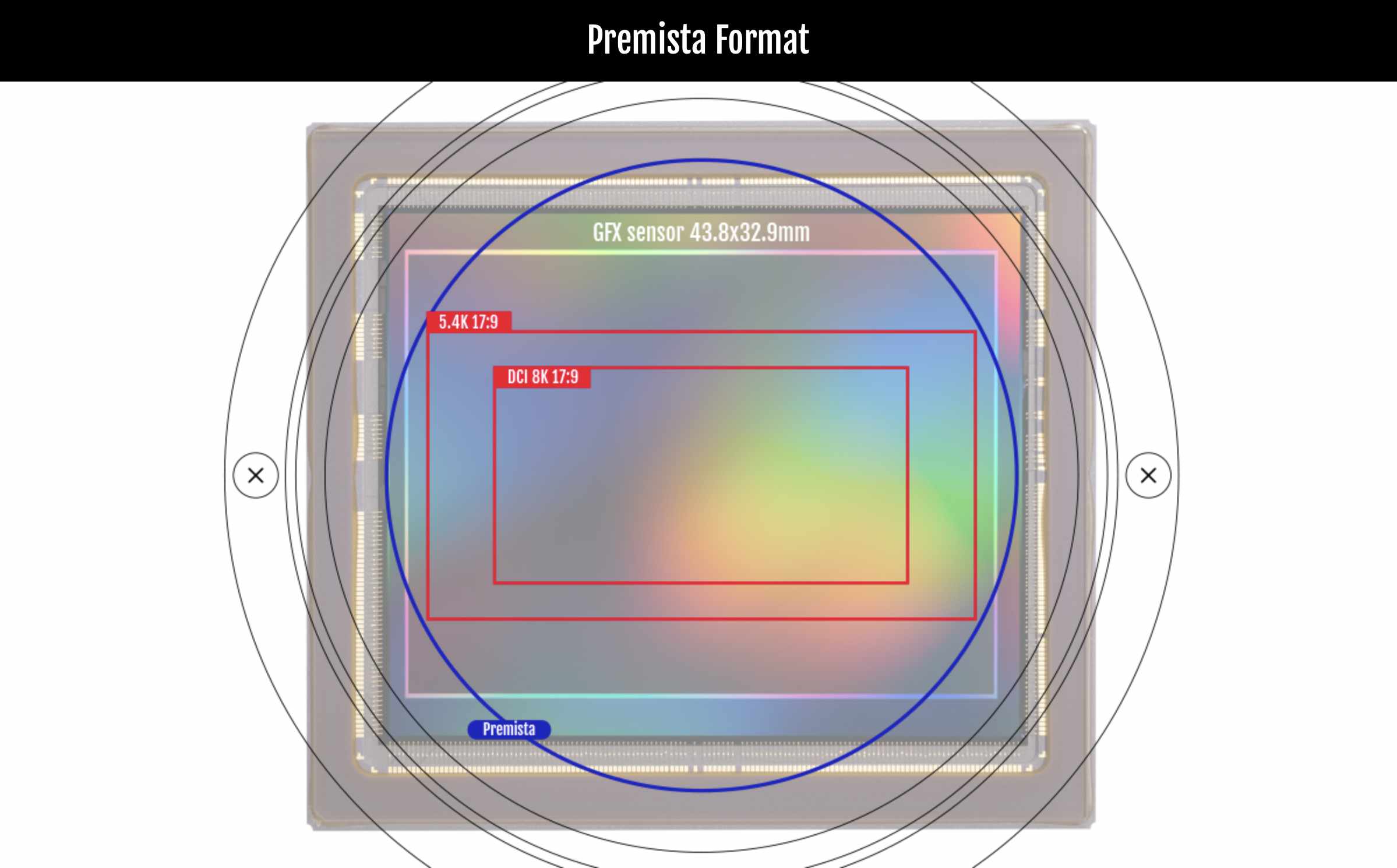

For my current casual video needs, the GFX100 II works very, very well indeed. The 4k 60p video quality is excellent. The new “touch to focus” tracking is intuitive and easy to use. Some lenses still have issues with making smooth focus pulls, but the camera itself doesn’t appear to be at fault.
Controls
I was surprised at the number of reviewers that remarked on the improved build quality, with several calling out the improved control interfaces. Perhaps when compared to the original GFX100, there may be some improvement, however when compared to the GFX100S, I see little tangible improvement.
I do however see improvement in the number of buttons. The three above the shutter button are brilliantly placed; the two near the lens mount are perfectly positioned to set for the 3D digital level. The top LCD screen is much larger and easier to read, but I don’t find the extra information it provides to add much to the experience.

The top two buttons on the right of the LCD have some of the worst feel of any button I’ve experienced on any camera. There’s no tactile feedback, just a slow and mushy button press. The rest of the buttons on the camera could be from any camera under US$1,000.
“The slanted top is a design choice that I personally don’t like, however in real life use, it’s a pleasant change and does give a unique look when viewed in profile.”
The joystick is the same as the GFX100S, which means it works, but is a bit clumsy and imprecise. Fujifilm smartly decided to speed up the acceleration of the joystick but went too far. I find myself overshooting when moving around an image; in some zoom modes, it’s awkwardly slow. I hope they finetune this in a future firmware or give us the choice of how fast it accelerates.
The slanted top is a design choice that I personally don’t like, however in real life use, it’s a pleasant change and does give a unique and sleek look when viewed in profile. It makes seeing the top dial and screen easier while working behind the camera. From a design aesthetic perspective, I still prefer the flat-top of the GFX100S.

If you’re coming from any Fujifilm camera, the controls will feel similar, albeit in different positions on the camera (I give Fujifilm credit for continuously searching for the ideal controls layout, even at the expense of customers’ patience). If you’re coming from a Canon, Sony or especially a Nikon, you’ll feel the buttons are adequate but not befitting of a US$7,499 camera.
Performance
Fujifilm touted the increased performance of the new camera with phrases such as “2x the readout speed”, 20% faster AF performance with “surgically accurate AF” and “blackout-free 5.3 fps burst” capabilities. In real life use, there are certainly performance improvements, but not to the scale that matches the marketing jargon.

There are six areas where the camera does show improved performance:
- The new CF-Express Type B card is much faster at reading images off the card, which makes the camera feel more responsive. You must still consider the lens performance however, as it racks back and forth and parks before you can view an image; slow focusing lenses like the GF80 and GF55 will be much slower to view an image than if you’re using the GF50 for example.
- The increased performance enables the camera to record 4k at 60 fps, an increase from 30 fps in the previous GFX100S. The camera can also record 8k at 30 fps, but the crop and rolling shutter limit the utility of the 8k mode.
- The camera can now shoot at up to 8 fps in high-speed continuous mode. There are some tradeoffs as Jim Kasson has identified (camera switches to 12-bit mode for >3 fps).
- The camera’s ability to maintain focus on a moving subject via the subject tracking function; there is a lot more stickiness to the subject, albeit with the false positive issue noted above.
- The EVF is glorious. Fujifilm have endowed the GFX100 II with a 9.44 MP 1x EVF. The image is super bright (interestingly, my camera was delivered with Brightness set to “Auto +1” which may be a bit misleading as the GFX100S was set to “Auto”). However, there’s no denying the new EVF is a big upgrade from the GFX100S, especially if you’re a manual focus fan.
- The camera is “blackout free” during continuous shooting at 3 fps when using the Mechanical Shutter and 5.3 fps with the Electronic Shutter. There is actually one black slide at the beginning of the series, but then becomes seamless.
Besides the above, the camera’s performance is largely the same as the GFX100S. The previous processor in the GFX100S lagged a bit and the updated one in the GFX100 II still lags at times. I think it’s part and parcel in managing the data flow of 102MP on a sensor 70% larger than Full Frame.

If you’re coming from a modern Full Frame camera, you’ll find the GFX100 II’s performance to be slightly below expectation. If you’re coming from an APSC camera, you’ll find the performance sluggish. If you’re coming from a competitors Medium Format camera, you’ll find the performance shockingly good. It’s all about perspective again.
Portability
Since this blog is focused on Travel & Photography, I need to talk about portability. The GFX100S was an incredible feat of engineering in getting a large sensor into a body no bigger than most Full Frame cameras.
Thanks to the GFX100 II being targeted more at professionals, it’s not as portable as the GFX100S and that extra size becomes a tight squeeze into many travel-oriented camera bags. I can’t fault Fujifilm as they wanted to include professional grade connectivity. It’s noteworthy that the GFX100 II is about the same size and weight as the new Nikon Z8.
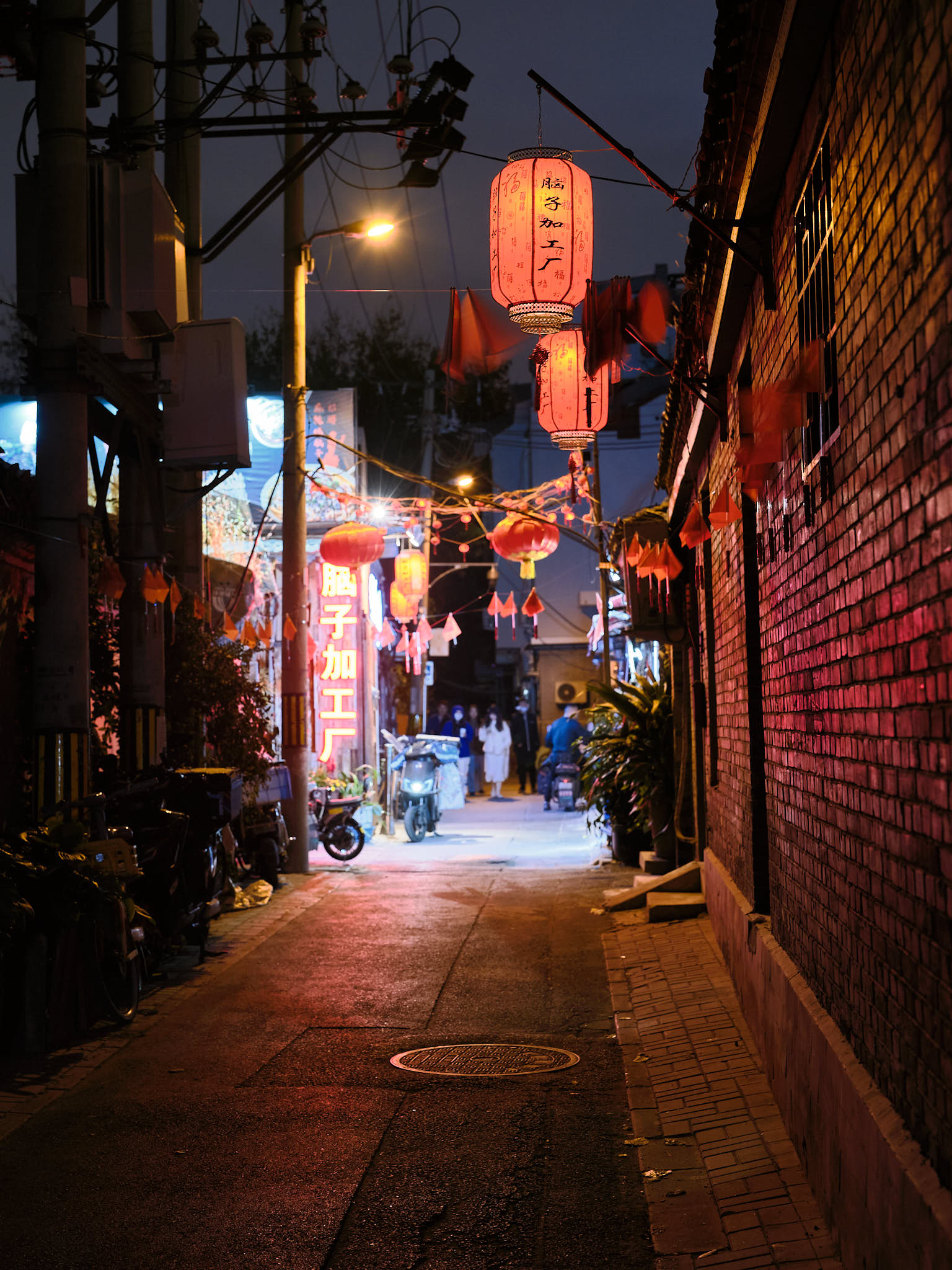
Being a travel enthusiast, I yearn for a GFX100S body married to the GFX100 II internals. I can give up the Ethernet port, full-size HDMI, but would like to keep the CF-Express Type B card. I used to look at Canon 5D Mark IV users with scorn and now I’ll be that guy carrying a dimensionally identical GFX100 II around the world.
“Being a travel enthusiast, I yearn for a GFX100S body married to the GFX100 II internals. I can give up the Ethernet port, full-size HDMI, but would like to keep the CF-Express Type B card.”
There’s however a magic trick up the GFX100 II’s sleeve that makes the camera slightly more portable when it’s absolutely required. You can remove the EVF. This brings the camera’s height to 117.4mm which means it can be almost as short as the GFX100S.
All told, the GFX100 II is still a remarkably compact camera for what it is, and a huge improvement in portability for GFX100 users. For GFX100S users like me, the new camera is a small step back in portability, but a worthwhile tradeoff given the extra performance and connectivity.

I’m still able to fit the GFX100 II in a Peak Design 20L everyday backpack, along with 2-3 lenses. The dividers need to be setup to accommodate the taller height, but it’s still workable. The extra 100g of weight doesn’t make much difference.
Conclusion
Based on the initial reviews and Fujifilm’s slick gorilla marketing tactics, I had high hopes and expectations for the GFX100 II. I think 75% of my expectations have been met; for the remaining 25%, there’s a chance Fujifilm can close the gap with future firmware updates.
If you’re thinking about getting a GFX100 II and you’re wondering what your experience will be like, I think it’s important to factor in what system you’re currently coming from. That will largely portend if you’ll be happy with the rather large US$7,499 outlay.
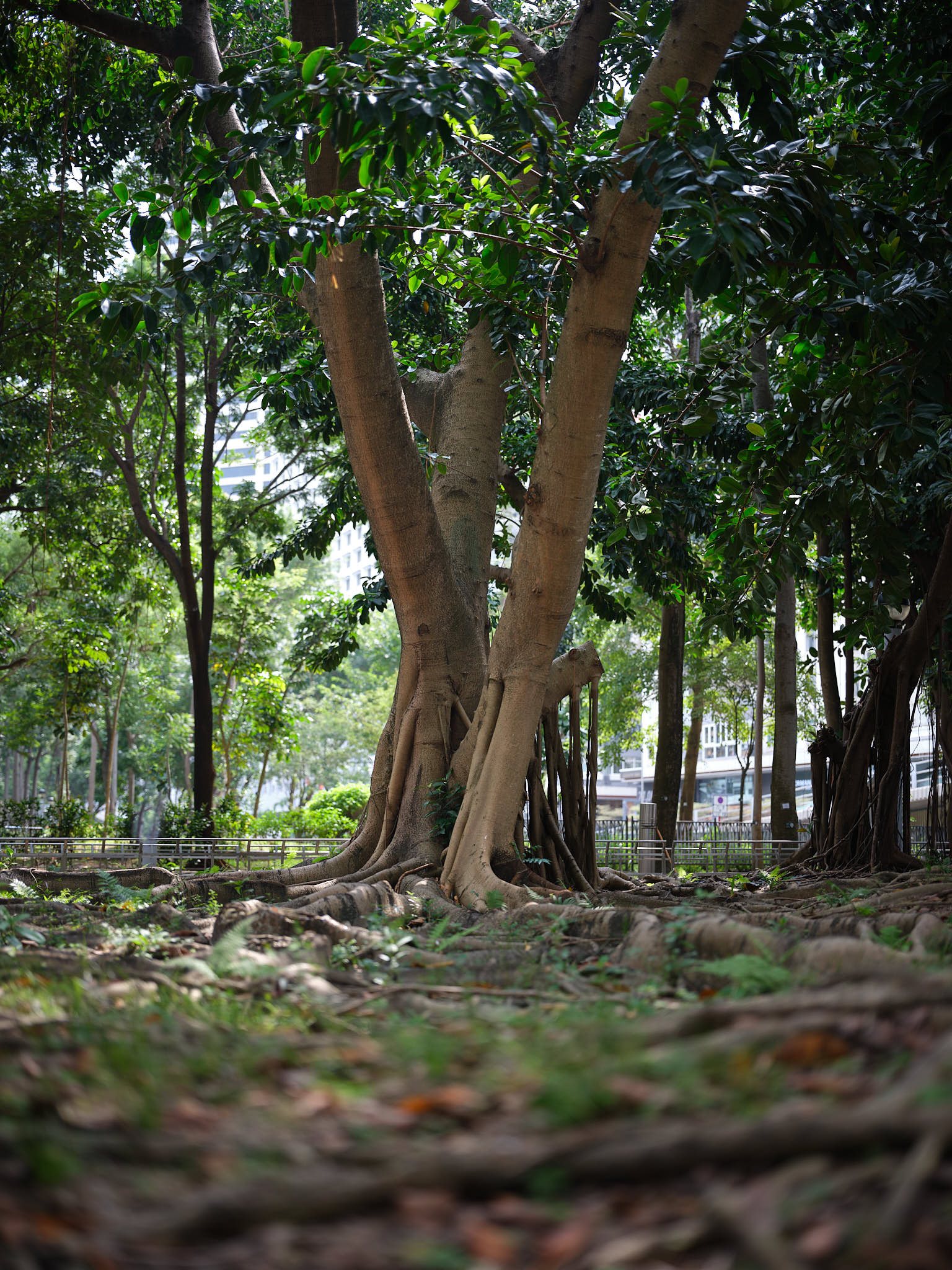
If you’re coming from GFX100:
You’ll find this a huge upgrade in portability, refinement, AF capability, card reading speed, video performance and price. It would be a “no-regrets” purchase.
If you’re coming from GFX100S:
You’ll find this a marginal upgrade where the key differences will be the AF performance, specifically the subject detection and tracking capabilities, video capabilities, professional connectivity and high resolution EVF. It’s a tough decision given the US$4,000 price differential after selling or trade-in.
If you’re coming from modern Full Frame or APSC cameras:
You’ll love the image quality, 102MP resolution and 4:3 format, the Fujifilm film simulations which give even professionals a head start on post-processing, and the excitement of being on a Medium Format journey. You’ll also fall in love with the GF lens range where nearly every lens is exceptional.
You won’t however love the AF performance, nor the size and heft of the camera. If you really need the resolution and 4:3 ratio, it’s an easy decision, but if you don’t need those, it’s probably better to stick with Full Frame or APSC.

Fujifilm marketed this camera as being a replacement for high end Full Frame. I think it misses that lofty mark but does narrow the gap considerably. With a bit more machine learning, perhaps the AI assisted AF system can match current Full Frame cameras.
For now, it doesn’t and that’s what holds this camera back from being a true “do it all” camera. It should be noted that with some lenses, the GFX cameras will never match Full Frame because there’s so much glass to move in the GF lenses and the use of slower DC motors in the large aperture lenses that most need accurate AF.
I’ve decided to keep the GFX100 II and have reluctantly put my GFX100S up for sale; the AF improvements are significant enough for my uses that I’m going to give Fujifilm the benefit of the doubt and hope that they can make even greater AF improvements over the GFX100 II’s lifetime. I have great memories from the love Fujifilm showered on us X-Pro2 users through firmware; let’s hope that spirit is still alive.

If history is anything to go by, I expect Fujifilm will make my dream camera in 18 months’ time, the GFX100S II, using the sexy GFX100S body, a toned down 5.76MP EVF and less professional connectivity options. That would be the perfect camera in my opinion and may be worth waiting for; it will again fly off the shelves if they keep it at the same US$5,999 as the original GFX100S.
Perhaps the best camera available today is a second-hand GFX100S. At US$3,400, it’s one heck of a camera. As long as you’re working with a static subject, the AF is more than adequate, and you’re still getting the same image quality as the GFX100 and GFX100 II. It may be the ideal option to consider.
Never miss a post again, please subscribe to our no-spam mailing list
Hope you’ve enjoyed this review. Please leave your thoughts below.

Discover more from fcracer - Travel & Photography
Subscribe to get the latest posts sent to your email.
I would suggest the port flaps are thoughtfully deliberately designed how they are — to allow various cables to come out in a direction they need to (also fitting with a rig cage or not) without a rigid door being in the way, or having the door damaged.
Good point Paul. I see that Sony and other manufacturers use door hinges and their cables seem to be routable as well. Even Fujifilm’s own X-T5 uses nice hinges.
As an aside, I’ve now sold the GFX100S. It took only a week to sell it here in Mainland China. It was purchased for CNY39,800 in 03/2021 and sold for CNY23,000 in 11/2023. Therefore, the GFX100S cost me CNY16,800 over 32 months, or CNY525 (USD 74) per month. This comes out a bit higher than my Leica M10 which cost me USD 50 per month over its ownership span.
As always, very well done. Great shots and errr… perspectives. 🙂
I personally plan on sticking with the GFX100S. Fantastic images and great glass. That hasn’t changed.
That said I really would love it if *every* Fuji camera had the X-T controls. Nearly perfect imo. Fun to use and easy to understand. It’s actually the thing I like the least about the 100S/100II – they just don’t feel like proper Fujis to me. Really enjoying the X-T5 with the small primes. Peak Fuji for me right now.
With a few years of shooting an A1 I’m afraid I’ve become spoiled by the sheer performance of that camera and the GM glass. Knowing that you’re a car guy to me it’s like a Nissan GT-R. So capable but still relatively affordable.
Kudos to Fuji for carving out this 44×33 medium format niche and making it work. I hope they continue to absolutely crush it. From the looks of it the 55 is a must have too.
Great writeup and photos as always – thank you for putting in the work and sharing.
Hi Jeff, Thank you for the kind words on the review, I appreciate notes like these. Since this a hobby website, it makes it so much more fun when people write in with comments (good or bad). The GT-R analogy is so fitting. I wonder what the GFX100S would be? Maybe a Huracan? Beastly, but highly capable, and a bit unwieldy?
For the controls, I’m shifting over time. I was die-hard old school dials before, but now I’ve become so accustomed to using the C1-C6 memory settings. With the twist of one dial, I can have 90% of the camera’s settings change to optimize for that subject. The only control Fujifilm stubbornly leaves truly manual is the focus selector. If that was a button, it would make all the key settings saveable in the C1-C6 memory settings.
One of the main reasons I went on the Fujifilm MF journey was to experience a system from the ground up. We weren’t sure where this system was going to go back in the GFX50R days, but when the GFX100S came out, it was love at first sight and I knew that I had made the right decision. Thus far, Fujifilm hasn’t put a foot wrong. The cameras keep evolving at a good pace (my wallet can absorb only so many new cameras) and the lenses continue to be one stunner after another. As you noted, the GF55 is another stunner.
As we look to the future, imagine a stacked backside illuminated sensor giving fast readout speeds, benefiting rolling shutter and AF performance. Then in another four years, perhaps we’ll get a global shutter which brings so much to the table (faster readout, no need for mechanical shutter, computational photography, etc).
Exciting times to be alive!
I love your reviews, always thoughtful, honest, and very well considered. Thanks for taking the time to write these and share your photos. I hope that you will do a full review of the new GF 55mm, but could you quickly comment on the AF performance, especially compared to the 80mm?
Hi James, thank you for the kind words. I’m working on a full review of the GF55, but I can share some initial thoughts. The focus motor appears to be the same as the GF80 which means it’s noisy, slow and you can feel the motor’s torque in the camera body.
However, it appears there’s less focus elements to move, so it “feels” 50% faster than the GF80. It’s still nowhere near close to something like the Sony 35MM F1.4 GM where the focus is instantaneous, but given the wider field of view and greater depth of focus compare to the GF80, I do get more keepers with this lens at F1.7 than the GF80.
Regarding sharpness and bokeh, I haven’t conducted objective testing yet, but in practical usage, it seems to be superb. The lens balances size, weight and optical quality very, very well. I just wish Fujifilm had used a faster focusing motor. More to come…